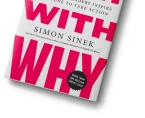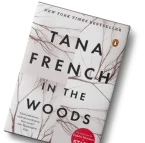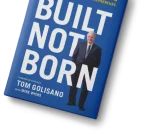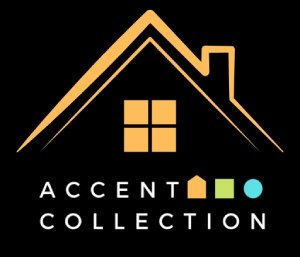
The publishing world has never been more accessible—or more complex. For aspiring authors, choosing between self publishing vs traditional publishing is one of the biggest career decisions. While traditional publishing holds historical prestige, self-publishing offers flexibility, speed, and control.
But which path should you choose? In this comprehensive guide, we’ll compare both routes, dispel myths (like why self-publishing is bad), and explore which option makes you more money. Along the way, we’ll also highlight how Estorytellers, a leading content and publishing support agency, empowers authors at every step—especially in the self-publishing realm.
Traditional vs Self-Publishing — Not Sure What’s Right?
Our experts help you understand the pros, cons, and earning potential of both models.
Get Clarity NowWhat is Self-Publishing?
Self-publishing allows authors to publish their work independently, without relying on a publishing house. Authors control everything: editing, formatting, cover design, marketing, and distribution.
Platforms like Amazon Kindle Direct Publishing (KDP), IngramSpark, and Smashwords have made self-publishing accessible worldwide. However, while the technical barriers are lower, the challenge lies in creating a professional, market-ready book.
That’s where experts like Estorytellers come in. With services ranging from ghostwriting to editing, formatting, and book marketing, Estorytellers provides authors with the professional edge needed to stand out in today’s saturated market.
What is Traditional Publishing?
Traditional publishing involves submitting your manuscript to agents or publishers, and if accepted, signing a contract. The publishing house then takes over the production and marketing process. You typically receive an advance and royalties.
While traditional publishing offers editorial expertise and wider distribution, it also involves long waiting periods, rejection rates, and loss of creative control.
Many authors today weigh self publishing vs traditional publishing based on how quickly they want to publish, how much control they desire, and whether they want to build a personal brand or rely on a publishing label.
Creative Control: Independence vs Guidance
Self-publishing gives you complete creative freedom. You choose the title, cover design, pricing, and release date. You can even revise your book post-publication—something traditional publishers rarely allow.
Traditional publishing, on the other hand, assigns professionals to guide your book’s production. This often includes altering titles or cover concepts to suit market demand. While this can enhance commercial success, it may also compromise your original vision.
Estorytellers bridges this gap by offering the best of both worlds—editorial guidance without stripping you of creative control. They work with you, not over you.
Want to Maximize Book Profits?
We show you how self-publishing can bring higher royalties, faster timelines, and total ownership.
Explore Your OptionsCosts: Investment vs Zero Upfront
A key distinction in self publishing vs traditional publishing lies in upfront costs.
- Self-Publishing: You pay for editing, design, formatting, ISBNs, and marketing. Depending on quality, this can range from $1,000 to $5,000+. The upside? You keep up to 70% of royalties.
- Traditional Publishing: No upfront costs. The publisher covers production and pays you an advance. However, royalties are lower, often just 5-15%.
If budget is a concern, Estorytellers offers tiered packages that cater to both beginner and experienced authors. They ensure your investment results in a polished, professional product without breaking the bank.
Do You Make More Money Self-Publishing or Traditional Publishing?
It depends on multiple factors: sales volume, royalties, rights, and scalability.
- Self-publishing can lead to higher income per book. Authors on platforms like Amazon KDP earn up to 70% royalties.
- Traditional publishing offers lower royalties but potentially broader distribution and marketing reach.
So, do you make more money self-publishing or traditional publishing? If you have a niche, a strong network, or invest in quality marketing (like Estorytellers offers), self-publishing can be far more profitable in the long run.
Time to Market: Fast vs Slow
If speed matters to you, self-publishing wins. You can publish within weeks of finishing your manuscript.
Traditional publishing involves querying agents, editorial rounds, cover design, and seasonal catalog planning. The process can take 12 to 24 months.
Estorytellers’ team of editors, designers, and marketing strategists can help you cut your time-to-market significantly while maintaining professional quality.
Traditional Publishing Isn’t What It Used to Be
Authors now prefer self-publishing for control, speed, and better financial returns. Let us help you win.
Publish IndependentlyEditing and Production Quality
One of the biggest criticisms in the self publishing vs traditional publishing debate is book quality.
Traditional publishers have in-house editors, proofreaders, and designers who ensure every book meets high standards.
Self-published books vary in quality. However, authors who invest in professional services produce books indistinguishable from traditionally published ones.
This is where Estoryteller’s ghostwriting services shine. Their team of editors, designers, and formatters are industry veterans, ensuring your book looks and reads professionally.
Marketing and Promotion
Marketing is one of the toughest parts of publishing, regardless of the route.
- Traditional publishers provide some marketing but focus heavily on bestselling authors. New authors must hustle independently.
- Self-publishers must build their platform, run ads, and engage on social media.
With Estorytellers’ book marketing services, authors receive strategic campaigns tailored to their audience, covering Amazon SEO, Goodreads promotions, media outreach, and more.
Distribution and Visibility
Traditional publishing still dominates physical bookstores, libraries, and academic institutions. However, digital distribution has leveled the playing field.
Self-published books are widely distributed via Amazon, Apple Books, Kobo, and other platforms. With the right strategy (and help from Estorytellers), your book can achieve global reach.
Want Full Rights and 100% Royalties?
With self-publishing, you control every aspect — from cover design to distribution and pricing.
Start With UsWhy Self-Publishing Is Bad (For Some Authors)
Self-publishing isn’t a magic pill. Here’s why some authors say “why self-publishing is bad”:
- Lack of professional editing leads to poor quality.
- No marketing knowledge means low sales.
- Scams and vanity presses prey on new writers.
These pitfalls are avoidable, especially with expert support. Estorytellers guides you through every stage, ensuring professionalism, strategy, and integrity.
Self-Publishing vs Traditional Publishing Children’s Books
Children’s books present unique challenges: illustration, layout, and physical print quality.
Traditional publishers have networks of illustrators and know how to market to schools and libraries.
Self-publishing requires you to source illustrators and design the book’s layout. Estorytellers offers custom children’s book packages—including writing, editing, and illustration coordination—tailored to this specific genre.
So in the battle of self-publishing vs traditional publishing children’s books, Estorytellers helps level the playing field for indie authors.
New Author? Let’s Make It Easy
We guide you through the entire process — from manuscript to Amazon, bookstores, and beyond.
Talk to a ConsultantBuilding Author Credibility
Traditional publishing offers built-in credibility. Reviewers and literary award bodies often prioritize traditionally published books.
Self-published authors can still build authority, especially through consistency, quality, and branding.
Estorytellers supports long-term brand development for authors, helping with blogging, website creation, social media, and reputation building. Over time, self-published authors can achieve the same or even greater credibility.
Hybrid Publishing: The Best of Both Worlds?
Hybrid publishing combines elements of both models. Authors pay for services but retain rights and earn high royalties. Some hybrid publishers are reputable, while others are disguised vanity presses.
Instead of gambling, many authors turn to service providers like Estorytellers, who offer à la carte or package-based publishing support without taking your rights or royalties.
Real Success Stories
- Mark Dawson: Self-published thriller author earning six figures monthly.
- E.L. James: Started with fan fiction and self-publishing; later secured a traditional deal.
- YouTubers & Influencers: Increasingly use self-publishing to monetize their audience with high-quality books—often with support from professional teams like Estorytellers.
How Estorytellers Helps You Succeed
Estorytellers isn’t just another content agency. They are your publishing partner, offering:
- Ghostwriting & Manuscript Development
- Professional Editing & Proofreading
- Book Cover & Interior Design
- Amazon KDP & Global Distribution Setup
- Marketing Strategy & Execution
- Children’s Book Illustration & Formatting
Whether you’re writing fiction, nonfiction, or children’s books, Estorytellers helps you publish smarter, faster, and more professionally.
Skip the Gatekeepers — Publish Now
No rejections, no delays. Self-publish your book professionally and reach readers in 30 days.
Publish FasterConclusion: The Right Path for You
There’s no one-size-fits-all in the self publishing vs traditional publishing debate. Each has its pros and cons:
- Want control, speed, and high royalties? Go self-publishing.
- Want prestige, structure, and editorial support? Go traditional.
- Want expert help but still own your book? Go with Estorytellers.
With the right support, you can publish a book that competes with the best in the industry—regardless of the path you choose






























